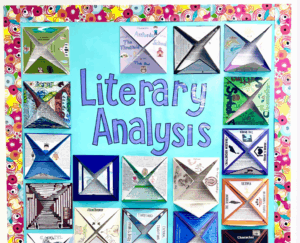“And what is that, madam?” inquired James politely.
“That we live on a crust of earth which is on the back of a giant turtle.”
Not wishing to demolish this absurd little theory by bringing to bear the masses of scientific evidence he had at his command, James decided to gently dissuade his opponent by making her see some of the inadequacies of her position.
“If your theory is correct, madam,” he asked, “what does this turtle stand on?”
“You’re a very clever man, Mr. James, and that’s a very good question,” replied the little old lady, “but I have an answer to it. And it’s this: The first turtle stands on the back of a second, far larger, turtle, who stands directly under him.”
“But what does this second turtle stand on?” persisted James patiently.
To this, the little old lady crowed triumphantly,
“It’s no use, Mr. James—it’s turtles all the way down.”
This story has been used to make points about everything from the tension between faith and science, to the futility of argument and persuasion, to the so-called “problem of infinite regress.” Lately, I’ve been thinking about in terms of one of the most current theories about the nature of consciousness. Usually called the Integrated Information Theory (IIT), it posits that everything in the universe, right down to the smallest particle is conscious, even if ever so faintly. The degree of consciousness within a system — like a human being — can be measured by how well the system integrates these tiny amounts of consciousness into the singular experience of reality.
I’ve read two full books on this theory and still don’t fully understand it, and the theorists themselves can’t explain how this integration results in conscious experience (it’s not called the “hard problem” for nothing), but what it amounts to, it seems to me, is that it’s consciousness all the way down.
IIT is likely a passing fad. Theories about consciousness come and go, often inspired by our latest technologies. René Descarte, one of the towering figures in all of science, was impressed by the hydraulic figures in the royal gardens and developed a hydraulic theory of the action of the brain.
Neuroscientist Patrick House writes, “It is often said . . . that theories of how the brain works latch on to whatever complicated technology or idea exists at the time. Hence, we got steam-based theories of the brain in the eighteenth century, loom-based theories in the twentieth, computational theories in the twentieth, computational theories in the twentieth, and quantum-computing-based theories in the twenty-first . . . Considered in the inverse, these criticisms represent a remarkable fact about nature. It implies that no matter how complicated a discovery we make, we find out shortly afterward that nature has already both known and taken advantage of the phenomenon.
“Long before Newton discovered the laws of gravity, our muscles stretched in calculated attempts to defy it and our eyes tracked objects as arcs in the sky, which accelerated somewhere around ten meters per second squared. Long before we understood Earth’s magnetic field lines, birds and butterflies were using them to migrate, etc . . . One can only imagine what else brains might harness from the universe as future scientific fields that we have not discovered yet.”
Of course, our species has had only had about 300,000 years to figure things out. In a universe that’s 13.8 billion years old, and still inventing itself, it stands to reason that we are an infinitely long way from comprehending more than a sliver of a sliver of a sliver. It’s humbling to consider, especially as an educator of young children who often show themselves to be closer to the core of the matter than all the scientists, theologians, and philosophers combined. It often seems like pure arrogance to think that I have anything truly important to teach these humans.
What I’ve learned from the culture of childhood, the one that emerges when they are allowed to step away from our self-important nagging and instruction, is that to engage reality through wonder, awe, and play — to feel too deeply, to laugh too loudly, and to love too hard — is the best, and indeed only, possible use for our very short lives.
Young children, like the ancients, the butterflies, and the little old ladies, already know that it’s turtles all the way down. The rest is an endless series of theories and fads with which we play until we either break them or discover a something new. That is education.
******




